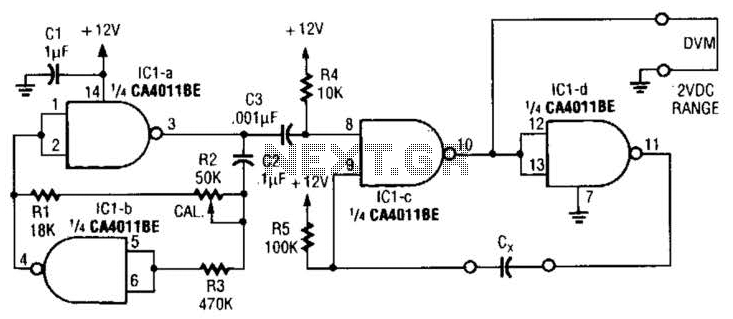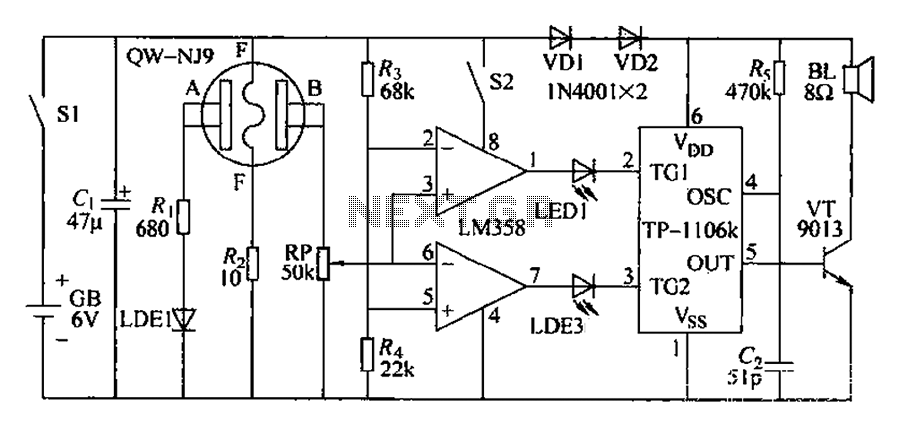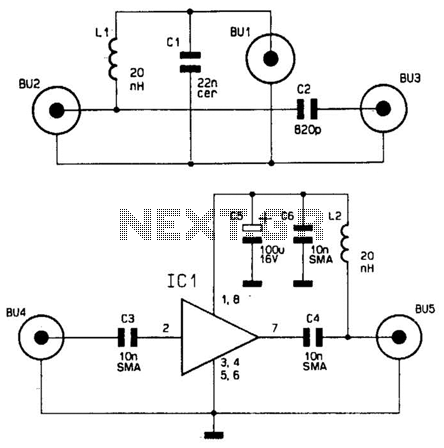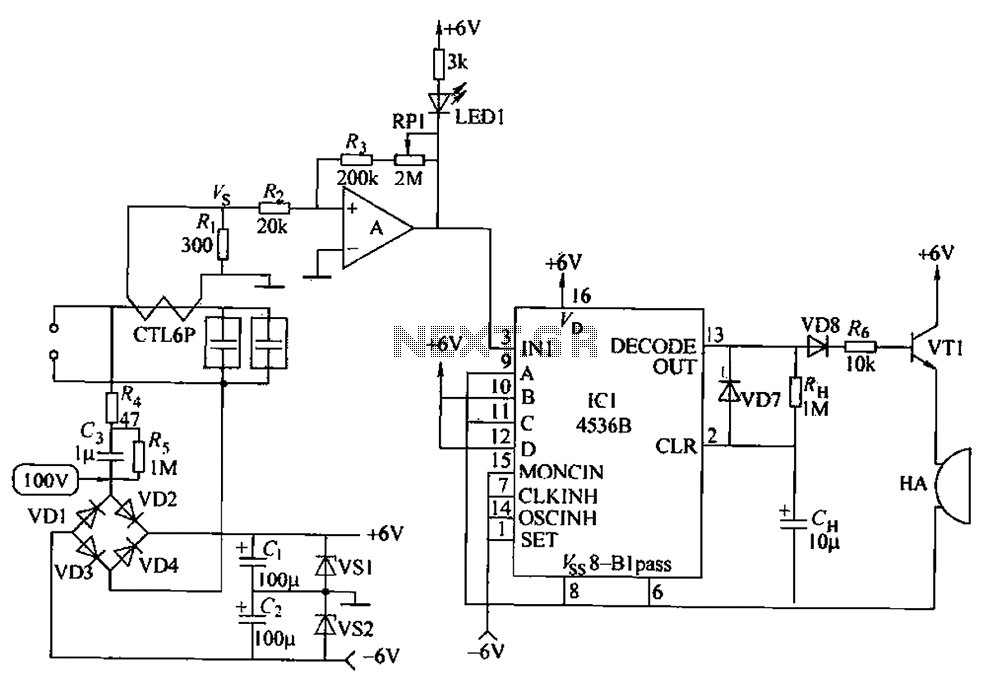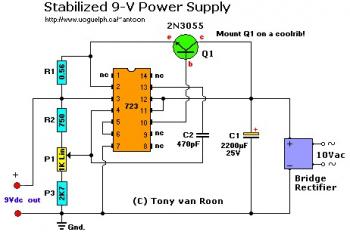
L200 12V Constant Voltage Battery Charger Circuit
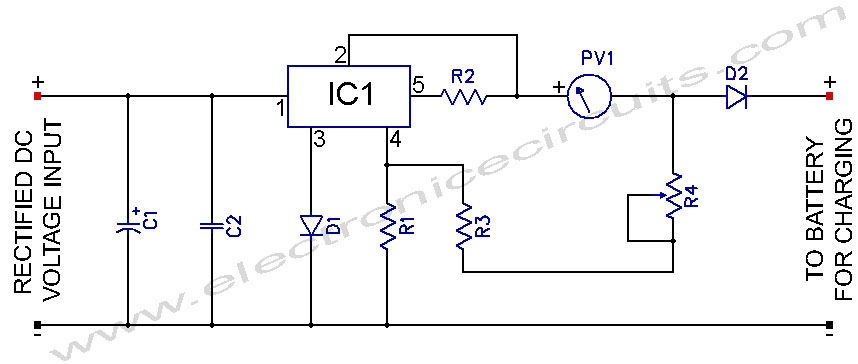
L200 12V Constant Voltage Battery Charger Circuit. This battery charger is based on the L200 regulator IC. The L200 is a five-pin adjustable voltage regulator.
The L200 constant voltage battery charger circuit is designed to provide a stable 12V output for charging batteries. The core component of this circuit is the L200 voltage regulator, which is known for its ability to maintain a consistent output voltage despite variations in input voltage and load conditions.
The circuit typically includes the following components:
1. **Input Voltage Source**: This is the power supply that feeds the circuit. It must provide a voltage higher than 12V to ensure proper regulation by the L200.
2. **L200 Voltage Regulator**: The L200 is a versatile adjustable voltage regulator with five pins: input, output, ground, and two adjustment pins. The output voltage can be set using external resistors connected to the adjustment pins, allowing for precise control over the output voltage.
3. **Filtering Capacitors**: Input and output capacitors are used to smooth out the voltage and reduce ripple. These capacitors are critical for maintaining a stable output voltage and protecting the circuit from noise.
4. **Current Limiting Resistor**: To prevent excessive current from flowing into the battery during charging, a current limiting resistor may be included in the circuit. This component ensures that the charging current remains within safe limits for the battery being charged.
5. **Diode**: A diode may be placed in parallel with the output to prevent reverse current flow when the charger is disconnected from the battery. This protects the circuit and battery from potential damage.
6. **Heat Sink**: Depending on the load and input voltage, the L200 may require a heat sink to dissipate excess heat generated during operation, ensuring reliable performance.
The circuit can be assembled on a printed circuit board (PCB) for compactness and reliability. It is essential to consider the specifications of the battery being charged, including its voltage and capacity, to select appropriate components and ensure safe operation.
Overall, the L200 12V constant voltage battery charger circuit is an effective solution for charging lead-acid or similar batteries, providing a reliable and adjustable charging mechanism.L200 12V Constant Voltage Battery Charger Circuit This battery charger is based on L200 regulator IC. L200 is a five pin adjustable voltage and.. 🔗 External reference
The L200 constant voltage battery charger circuit is designed to provide a stable 12V output for charging batteries. The core component of this circuit is the L200 voltage regulator, which is known for its ability to maintain a consistent output voltage despite variations in input voltage and load conditions.
The circuit typically includes the following components:
1. **Input Voltage Source**: This is the power supply that feeds the circuit. It must provide a voltage higher than 12V to ensure proper regulation by the L200.
2. **L200 Voltage Regulator**: The L200 is a versatile adjustable voltage regulator with five pins: input, output, ground, and two adjustment pins. The output voltage can be set using external resistors connected to the adjustment pins, allowing for precise control over the output voltage.
3. **Filtering Capacitors**: Input and output capacitors are used to smooth out the voltage and reduce ripple. These capacitors are critical for maintaining a stable output voltage and protecting the circuit from noise.
4. **Current Limiting Resistor**: To prevent excessive current from flowing into the battery during charging, a current limiting resistor may be included in the circuit. This component ensures that the charging current remains within safe limits for the battery being charged.
5. **Diode**: A diode may be placed in parallel with the output to prevent reverse current flow when the charger is disconnected from the battery. This protects the circuit and battery from potential damage.
6. **Heat Sink**: Depending on the load and input voltage, the L200 may require a heat sink to dissipate excess heat generated during operation, ensuring reliable performance.
The circuit can be assembled on a printed circuit board (PCB) for compactness and reliability. It is essential to consider the specifications of the battery being charged, including its voltage and capacity, to select appropriate components and ensure safe operation.
Overall, the L200 12V constant voltage battery charger circuit is an effective solution for charging lead-acid or similar batteries, providing a reliable and adjustable charging mechanism.L200 12V Constant Voltage Battery Charger Circuit This battery charger is based on L200 regulator IC. L200 is a five pin adjustable voltage and.. 🔗 External reference
